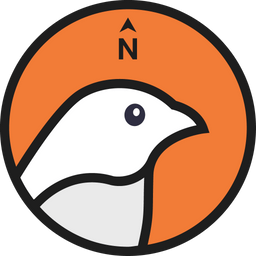Wat Kam Ko, which translates to "flower of the Bunnaak tree" in the Thai Yai language, was established on January 22, 1890, coinciding with the day of the waxing moon on the 13th night of the second lunar month in the Year of the Tiger (B.E. 1252). The temple’s first abbot, known as "Khru Ba Thao," was a Thai Yai immigrant from Chienthong who initiated the construction of this temple. The local community affectionately referred to him as "Tuu Jao Chiang Tong," meaning "the monk from Chiang Khong." The establishment of Wat Kam Ko can be summarized as follows: When Khru Ba Thao emigrated from Chienthong to Mae Hong Son Province, he traversed the region until he discovered a clearing approximately the size of half a football field, enveloped by forest. This location was ideal for constructing a temple without felling trees or altering the landscape. He subsequently invited the locals to come and decide on the temple's establishment. The local community collectively sourced construction materials and contributed their labor. The architectural style of Wat Kam Ko reflects Thai Yai traditions, created by skilled artisans from the Thai Yai community who settled in the area and embraced the temple. A standout feature of the temple is the entrance arch leading to the sermon hall, known as "Sang Wan," which is a hallmark of Buddhist architecture unique to Mae Hong Son, designed specifically for temples, not typical residential buildings. In the past, it was customary for visitors to remove their shoes before entering the temple through the "Sang Wan" as it was believed that wearing shoes inside the temple showed disrespect. Furthermore, it was thought that dirt and sand from outside would cling to the shoes, which would be regarded as a significant sin. To preserve the sanctity of the temple and ensure that no impurities were carried inside, the practice encouraged not taking anything out of the temple either. Hence, when borrowing items like bowls or plates from the temple for merit-making ceremonies, if any items were missing upon return, the borrower would immediately replace them with something from home or purchase a new one. This reflects the belief that it's better for one's belongings to reside in the temple than for temple items to reside in one’s home. The "Sang Wan," a distinct Thai architecture, was built in 1941 by philanthropists Mr. Suay Jing and Mrs. Yun Tree Thong. Key features within Wat Kam Ko include several important artifacts: 1. The principal Buddha statue, presented by the current Supreme Patriarch. 2. The Mandalay Buddha, transferred from the ubosot (ordination hall) of Wat Phra Non, dedicated on the 13th day of the 8th lunar month in 1966 by Phra Khru Kunma (Kamal) and Phra Maharak Suphinyo. It has been enshrined in Wat Kam Ko for approximately 80 years. 3. The Saan Buddha (approximately 114 years old), venerated by the local community, was brought from Mandalay, Myanmar, and has been the principal statue since the temple's inception. 4. The marble Bodhisattva statue was presented by Mr. Boon Choo and Mrs. Prisana Tree Thong, brought from Myanmar to be enshrined on April 7, 1990. 5. The ancient Dhammasana, donated by the local elder community, created when the temple was first built, is approximately 114 years old. 6. The black stone Buddha, an artistic piece sourced from Aung Wa, obtained from a vintage shop in San Kamphaeng, Chiang Mai, on April 7, 1996. 7. The temple hall, built on January 8, 1990, serves as a venue for religious ceremonies, showcasing a blend of Thai Yai and Burmese architectural styles. 8. The Vipassana Meditation Hall, designed to accommodate at least 100 practitioners, was established on March 10, 1976. 9. The Suwan Somboon Hall, constructed on December 5, 1973, is used for religious ceremonies and housing the deceased. 10. The kitchen, built on December 19, 1986, serves meals for various ceremonies and events. 11. The large guest quarters can host up to 50 visitors. 12. The small guest quarters accommodate additional visitors. 13. The ห้องคุณสมบัติครูปัญญาวราภรณ์, a row-style building with well-defined bedrooms, bathrooms, and toilets, was established on August 17, 1988. 14. The quarters of Somdej Phra Yannasangworn, the Supreme Patriarch, who once resided here and brought a principal Buddha statue measuring 60 inches in the Mara Victory pose for the temple's auspiciousness on November 14, 1977, and February 14, 1992. 15. The Luang Pu To Hall features statues of Somdej Phra Phutthachao (To Phromrangsi) and King Chulalongkorn (Rama V), built on March 16, 1989. Visitors interested in learning more can contact us at 053 612 226.
Photo Credit: ททท.สำนักงานแม่ฮ่องสอน
Wat Kam Ko
Province: Mae Hong Son

